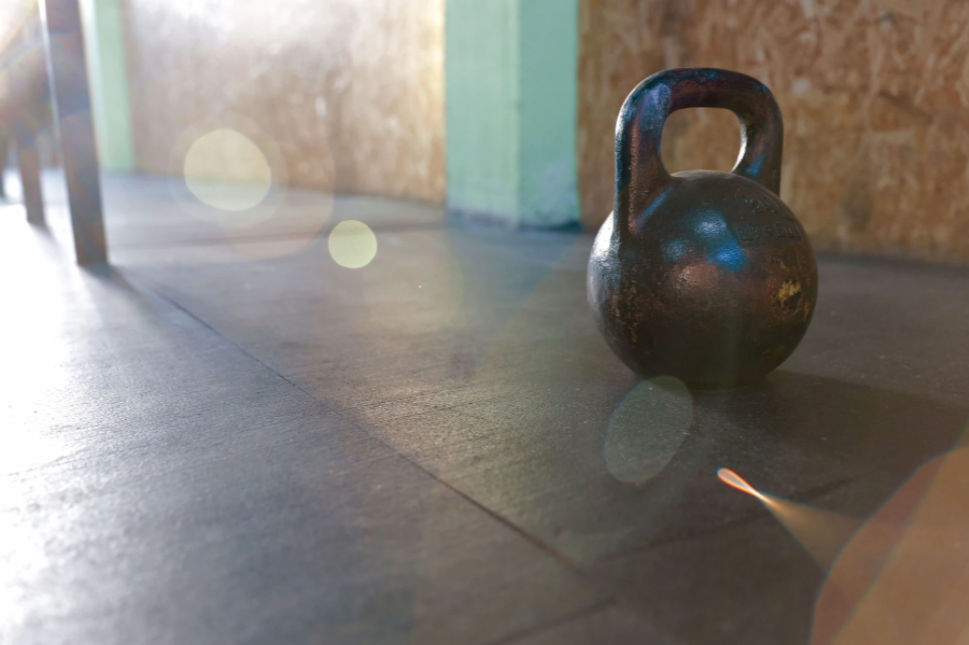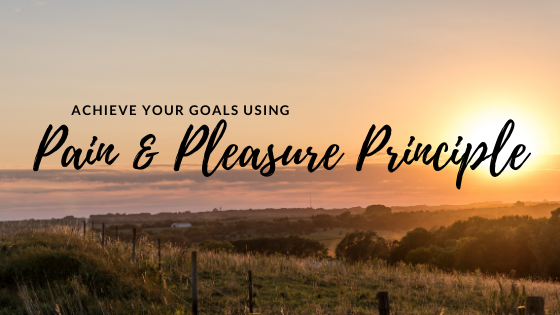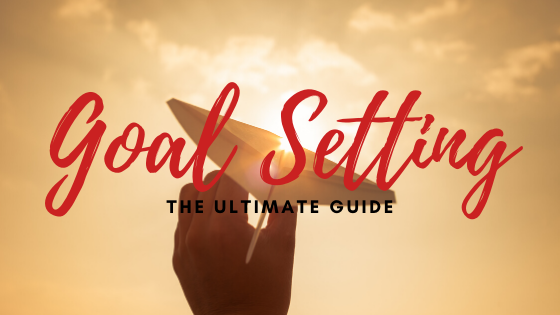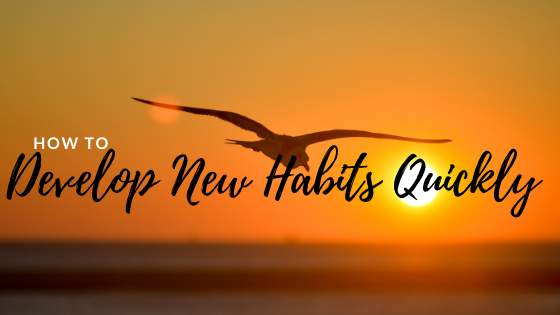As humans, we naturally seek pleasure over pain. Everything we do is controlled by the level of pain or pleasure we might get out of it. Our decisions, actions and habits are directly affected by the level of pain and pleasure they bring to us. Experts claim we are who we are today depending on how we have interpreted pain and pleasure throughout our lives. Additionally, they claim no experience is really helpful or hurtful, it all depends on our perceptions at the time. How then can we use the pain and pleasure principle to achieve goals?
The power of the pain and pleasure principle to achieve goals
Experts conclude that most of the decisions you will make will revolve around maximising pleasure and minimizing or avoiding pain, be it short term or long term. You may also fall for instant gratification, this is indulging in short-term pleasure to avoid short-term pain. Alternatively, you may choose short-term pleasure over long term pleasure as the long term pleasure is not motivating enough for you to be patient. Having enough motivation to move past short term pleasure, your temptations, to long term pleasure, your goals, is easier than doing things without motivation at all.
Finding Motivation

The pain and pleasure principle forms the foundation of our motivation and in understanding the principle we can adjust our motivation to better help us attain our goals. Motivation stems from how much pain and pleasure we associate with achieving our goals. Life coach, Adam Sicinski claims that to find the motivation to achieve your goals and objectives you will need to associate as much short and long term pleasure towards achieving the goals and as much short and long term pain in not achieving the goals.
Applying the pain and pleasure principle to achieve goals
I. Prepare Yourself
List your goals in preparation to apply the principle. Here is a guide to help you set S.M.A.R.T.E.R goals. Then start with the first goal you listed and think about what is holding you back from achieving the goal. You can ask yourself the following questions:
I. What are some of the limiting behaviours and habits holding me back?
II. What emotions, beliefs, thoughts and questions result from these habits?
III. When did the habit or behaviour start happening?
IV. What caused it?
V. What does this habit mean to me? Do I want to continue with it?
The main question is why you are allowing the habit to continue and most times the answer is that you simply do not have inspiration (pleasure)or desperation (pain) to help you change. Inspiration and desperation need to be balanced out to create the urgency needed to achieve your goals.
II. Awaken the pain
When you complete step one you will need to awaken the pain in order to deal with it. This involves questioning how the behaviours and habits mentioned in part 1are affecting your finances, career prospects, relationships and other people. Additionally, question the cost of the behaviour and any regret that may arise if you continue with the behaviour. This should be done in the present moment, past and future, that is 5 to 10 years to come. The goal of this step is to create desperation that will force you to act in line with your goals and your best interest. Here are some of the questions you can ask yourself;
I. What is this behaviour currently costing me physically, mentally and emotionally?
II. What is this behaviour costing me when it comes to my career prospects?
III. How is this behaviour affecting my relationship with others?
IV. How is this behaviour affecting how I spend my time?
V. How is this behaviour clearly not working for me now?
Repeat the questions for the past and the future to complete this step.
III. Interrupt the bad behaviour

After identifying the behaviours and finding out how they have impacted your emotions and various aspects of your life, the next step is learning how to interrupt the pattern of bad habit or behaviour. For this, you will need a phrase that will help you stop indulging in the habit. For instance, you could use the phrase “Stop it now!”, sing a song, ask yourself a question or read a phrase that will help you put a halt to the habit. Test the phrase, song, question or quote multiple times to ensure it works. When you verify it works, it is time to move to the next step.
IV. Choose a new empowering behaviour
Choosing a new behaviour will ensure you replace your bad behaviour with a good one that will help you achieve your goals and objectives. This will involve asking yourself more questions about the habit or behaviour you are trying to stop in order to clear any assumptions you may have. Questions you will need to ask yourself include;
I. What value have I been gaining from my unhelpful behaviour?
II. What benefits I have gotten from my unhelpful behaviour?
After identifying the values and benefits of your unhelpful behaviour, you need to develop what-if scenarios to help you choose a new behaviour. Here are some of them:
I. What if I achieved my goal?
II. What would I believe about myself and others?
III. What actions would I take?
IV. How would I behave?
V. How would I define myself?
VI. How would I define this new behaviour that has made this action possible?
By answering this question you are no longer focusing on the unhelpful behaviour but you are trying to install a new empowering behaviour that supports the achievement of your goals.
V. Inspire yourself
Here, you will be asking yourself questions that intend to inspire you to make the positive changes you need to. These questions focus on the pleasure you will be getting from a change of behaviour. Remember to focus on the new behaviour from step 4 as this is the behaviour that will help you achieve your goals. The questions should be asked in the present, past and future. Here are some of them;
I. How am I gaining physically, emotionally and mentally from this new behaviour?
II. How has this new behaviour expanded my career opportunities?
III. How has this new behaviour transformed my relationships?
IV. How do I now talk to myself?
V. What if I made this change years ago?
VII. What positive expectations do I have of the future?
VI. Why is it important that I follow through with making this change?
By completing this step, you will now be able to work from inspiration as well as desperation.
VI. Use anchoring to instil new behaviour

Anchoring is the triggering of certain emotions and memories that occur as a result of specific stimuli in our internal and external environment. Put simply, anchoring is the shortcut your brain develops to make sense of the world. To develop a new habit, you will need to anchor it to something else. Read more about anchoring here.
VII. Managing Change
Change is difficult, often because of the challenges we face within. It requires new perspectives, sacrifices and priorities. It is easier to slip back to the old habit than persist with a new habit. To make sure you stick to the new habit, here are a few questions you need to ask yourself;
I. What sacrifices do I need to make sure I persist with the new behaviour?
II. What do I need to give up thinking and believing?
III. What responsibilities or commitments do I need to let go of?
IV. What responsibilities or commitments do I need to adapt?
V. How should I change my decisions moving forward?
VI. What resources and tools will I need?
VII. What support will I need?
VIII. How will I acquire all these things?
All these questions will help you figure out what are some challenges you will encounter and the resources that can help you overcome the challenges. Every person has unique behaviours and habits that will require a specific set of resources to let go of. Add more questions as you deem fit.
VIII. Plan of Action to achieve goals using the pain and pleasure principle
After going through all the previous steps, you will need to devise a plan of action. This will require consistency and persistence. It is important to always keep in mind your inspiration and desperation as they will help you stay focused on the habit or behaviour you would like to change. You will need to ask yourself solution-oriented questions that will help you make the right decisions and birth your new behaviours and habits. Find out more about this principle here.
This entire process may seem long and tiring, but it is important to remember that change is not easy. When you audit your behaviours and habits and find out something you think should change, it is wise to start the process yourself other than wait for a crisis to change. Are you reacting to life or are you creating the life you want to live? Read how to develop good habits quickly.





1 Comment
[…] self-discipline. Experts claim we are naturally made to seek pleasure and avoid pain. Read about the pain and pleasure principle. Furthermore, the self-control theory suggests that people with higher self-control are better at […]